F.E.A.R. First Encounter Assault Recon
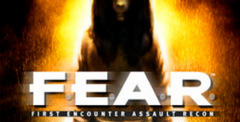
| a game by | Monolith Productions, Inc. |
| Platforms: | XBox 360, PC (2005), PC (2005), Playstation 3 |
| Editor Rating: | 9/10, based on 1 review, 9 reviews are shown |
| User Rating: | 9.1/10 - 9 votes |
| Rate this game: | |
| See also: | Horror Games, First Person Shooter Games, Psychological Horror Games, Fear Games, Games Like Battlefield, Games Like Overwatch, Games Like Quake, Games Like Bioshock |
Opinions differ, but for me the best PC game of E3 came down to Prey and F.E.A.R. Of course, there were a lot of other great shooters there - UT2007, Call of Duty 2 and Quake Wars to name but a few. But while other games might have looked better, boasted better credentials or pitched bigger battles, only two titles managed to create that special buzz that maybe we were seeing something new here, something different and exciting and with a lot more ideas than your average market-researched sequel.
With Prey it was the creative use of three-dimensional space that impressed. With F.E.A.R. it was the careful blend of tactical shooting and sphincter-tightening psychological horror, not to mention the sheer freakin' spectacle of the thing. For those who haven't played the demo yet (shame on you), this game throws out more debris, broken glass, smoke, sparks, flames, blood, guts and righteous hellfire than anything this side of Judgement Day. We're increasingly convinced that the slow-mo effect was put in just so you could moon around and admire it all.
To recap very quickly, the game puts you inside a high-tech, near-future government outfit called First Encounter Assault Recon, a covert strike team dedicated to combatting paranormal threats - a bit like Ghostbusters but with more death and dismemberment. Each member of the team has a special mental power - you're the new guy. and your power is to momentarily slow down time.
At the outset of the game an unidentified paramilitary group has taken over a high-tech aerospace complex and obliterated dozens of spec ops units sent to deal with them. On top of this there's a creepy little girl wandering around who appears to be able to kill people just by looking at them.
From our E3 hands-on we were able to fill in a few more details. The unidentified force is in fact a squad of top-secret military clones, led by an insane, psychically enhanced military officer by the name of Paxton Fettel. In the intro movie Fettel is seen kneeling in a prison cell, being visited by the creepy girt. Immediately afterwards, we cut to our clones, fully armed and armoured but in some kind of 'standby' state in a military warehouse. Suddenly, they jolt upright and snap into action, killing guards in a lightning attack.
Apparently, Fettel has managed to gain psychic control of the dormant clones, and on his command they take over the compound where he's imprisoned and liberate him. Soon after, Fettel pops up on a security feed, chowing down on the remains of one of the spec ops guys. Tasty.
Dangerous Minds
That's your job then - eliminate crazed puppet master Paxton Fettle. What role the little girl plays we don't yet know. Is she controlling Fettle? Is she a mere phantasm, an extension of his insane psyche? Who knows.
What we do know is that the action is stunning. Not only are the pyrotechnics without compare, but the weapons are seriously meaty to boot. You've had a taste of them already in the multiplayer beta: the chunky SMG, the nailgun that pins enemies to walls, the plasma rifle that can fire through a whole phalanx of bad guys. In combination with flying scissor kicks and other melee moves, it's about the most kinetic and enjoyable first-person action there is. It certainly gives Half-Life 2 a run for its money, and already has one or two advantages over that game. For a start there's the Al, which has to rank among the best we've ever seen. Enemies not only work in tactical squads and understand cover, but they pursue you like no other FPS foe. In one sequence I fired off a few rounds through a window, felling one of the enemies outside before backtracking to retrieve a better weapon. I assumed the rest of the baddies would wait dutifully outside for me to return, but not so. They actually opened the door (a miracle!) and hunted me down like a dog. They're also quite fond of crawling under obstacles, jumping over tables and flushing you out of corners with grenades. Of course, in between firefights you get the other half of F.E.A.R.'s magical blend - the creep-out horror moments.
The E3 demo showed this off brilliantly, with Paxton and his little friend invading your mind at regular intervals before disappearing in a puff of soot. It keeps you nicely on edge, never knowing if a squad of enemies or a half-seen phantom awaits you round the next corner.
We've seen a lot more of this game now, and F.E.A.R. is still our tip for shooter of 2005. Watch this space for the exclusive review and playable demo in a few short months' time.
Lean And Mean
The Importance Of Leaning Around Corners
One of my biggest (some would say pettiest) complaints with recent blockbusters such as Doom 3 and Half-Life 2, has been the baffling lack of a lean function. To me, this is a feature no modem-day FPS should be without. Obviously there's the odd exception (super-fast online shooters such as UT for example), but for any FPS with pretensions to realism or remotely tactical action, it's just common sense.
Without leaning you're mostly reduced to running around like a headless chicken. With it, you're peeking around comers, edging around walls and calculating angles of attack - you're much more aware of your environment and much more involved in the game as a result. What's more, by enabling better use of cover it forces enemies to be that much tougher, and as such it goes hand in hand with strong Al.
The best example I can think of to illustrate this is the once-mighty Soldier of Fortune II, and F.E.A.R. picks up right where that game left off. Powerful Al, tactical combat, impactful weapons, lots of gore - all the ingredients for a vintage, close-quarters shooter.
Download F.E.A.R. First Encounter Assault Recon

System requirements:
- PC compatible
- Operating systems: Windows 10/Windows 8/Windows 7/2000/Vista/WinXP

System requirements:
- PC compatible
- Operating systems: Windows 10/Windows 8/Windows 7/2000/Vista/WinXP

System requirements:
- PC compatible
- Operating systems: Windows 10/Windows 8/Windows 7/2000/Vista/WinXP

System requirements:
- PC compatible
- Operating systems: Windows 10/Windows 8/Windows 7/2000/Vista/WinXP
Game Reviews
We've always loved Monolith's games - notably AvP2 and NOLF 2- so feel a little perplexed that its games have never scaled the heights of those from the stables of the two Mac Daddies, id and Epic. Still, if we went on sales figures alone, we'd be worshipping Will Young and the like, so it was with no little excitement that we were told this year's E3 show was set to be the launchpad of a brand-new title, F.E.A.R. (it stands for 'First Encounter Assault Recon' if you're interested, but we wouldn't let it put you off your breakfast).
Ready To Roll
Getting the very first appointment of the very first day of the show, we squeezed ourselves into the dank booth, donned a pair of oversized headphones and settled back for the ride. Billed as a cross between The Matrix and The Ring, we were promised an 'intense combat experience with rich atmosphere and an engaging storyline', and the first few minutes of the demo definitely delivered in spades. F.E.A.R. sports a brand-new DX9-native engine, incorporating Havok 2.0 physics, developed from scratch by Monolith and looking especially tasty. You won't get a brilliant handle from the static screenshots, but one of the most talked about new features is the Cinematic Special FX, which shower you with sparks, cover you with smoke and generally make you want to drop your mouse, duck your head and shout 'Easy!' while backing off from the PC. Intense, it certainly is.
Under Siege
Before the demo, Chris Hewett, director of development at Monolith, broke his silence to put a sliver of flesh on the bones of F.E.A.R. "In F.E.A.R., an unidentified paramilitary force infiltrates an aerospace compound. They're taking hostages but issuing no demands. The US military responds by sending in its best Delta Force team, only to have them literally tom apart. So, with the US military best in over their heads, they turn to you, F.E.A.R. Your speciality is to handle the stuff no-one else can, almost like an X-Files Special Forces team if you like. And with that said, this is your team going in..." And the action starts with a helicopter drop onto a building. A massive firefight breaks out and in less than a minute your entire team's wiped out, leaving you to mop up the mess. Cue some pretty standard - albeit lush and frantic - FPS action, with the added distraction of some sublime bullettime slow-mo effects, with you up against a crew of well-oiled paramilitaries. So far, so good, but as you get deeper into the complex, you start getting your first whiff of F.E.A.R.
Back On Now!
You come across the bodies of the Delta Force team. They've been mutilated, but the lack of bullet holes in the room is evidence that the crack team didn't get a single shot off before being pulled apart. And this is the government's finest. Suddenly, you're up against distinctly non-humanoid beings, but just when you think you're a dead man walking, reinforcements arrive. Then, what looks like a small girl appears behind a security fence. This is when events take a distinctly unsavoury turn. In R/ng-style, the visuals start distorting and the girl starts walking towards your men. As she gets within a few metres, the bodies are mutilated by an invisible force, crushed, contorted and stripped of flesh, before being tossed into the air. Crikes. And then she starts walking towards you...
Thankfully the demo stopped there and we were tipped out into the bright lights of E3, something we've never been so relieved to see. F.E.A.R. looks frighteningly good, and although the team wasn't prepared to divulge any of the secrets of the story ("That's what's going to make the experience, so we want to keep that under wraps for now"), we saw enough to warrant a trip back to the hotel for a change of apparel before our next appointment. We'll bring you a huge update as soon as we dare. In the meantime we'll be sleeping with the lights on.
F.E.A.R. was announced a couple of months back and instantly made a bloody huge impact in the offices. We're always clamouring for intelligent adult games (no, not that sort), and the teaser Monolith released at E3, packed with gore, scares-a-plenty and a ghostly little girl capable of ripping the gizzards out of anything and everything that dares to ask shouldn't you be in bed?' more than sated our base desires. It was time to find out more...
F.E.A.R. (You got the fear)
According to Craig Hubbard, lead game designer on the project, F.E.A.R. was bom out of wanting to code a completely cinematic experience. You can see that philosophy at work with the freefall sequence in NOLF and the tornado in NOLF2, but we always cut away at some point. This time around, we wanted to craft a continuous experience, enabling you to play the story instead of reading it on load screens or watching it in cut-scenes between game sequences. Other games have gone this route, of course, but often at the expense of dimensionality and depth of characterisation and exposition."
Certain inspirations from the big screen are obvious. The new subtle strain of Japanese horror (Ring, Dark Water etc) and the more Glock-in-hand approach of John Woo are two gimmes. However, the combination of the two could define a game that has to provide action to succeed but wants to deliver the scares through the subtleties of suspense, something Hubbard sees as the best way to scare an audience.
Part of what I responded to when I first saw Dark Water was the fact that you never see the little girl's face, which creates a degree of tension that no production designer's most nightmarish concepts could ever match. Once you see the monster for what it is, it's easy to over-analyse it to the point that it's no longer scary. The brilliance of Alien was that you only got brief glimpses of dripping jaws and monstrous shadows on the wall. As great as the creature design is, what I imagined was far more disturbing than the reality.
And this 'less is more' approach is what makes the game unique in its genre. With almost every other game going for a discernable enemy and scares through numbers, F.E.A.R. is likely to be the one that gets under your skin. The one that you don't play just before you turn the lights off in case it crawls into your dreams.
Queensbury Rules
A lot of people are already pointing towards The Matrix as an inspiration for the slow in F.E.A.R., s Hubbard finds amusing.
"Actually. Sam Peckinpah demonstrated what slow motion could do for an action scene way back in the '60s and 70s, before the Wachowski brothers were even in kindergarten." And that's before John Woo put the motion back into slow, with classics like A Better Tomorrow and The Killer, or Ringo Lam's camera followed the flight of individual bullets in Full Contact.
As in Max Payne, the slow-mo scenes in F.E.A.R. are mainly player-activated, although you might be kicked into some automatically at certain points and you constantly stay slightly faster than your opponents, which gives ryou a crucial edge.
Unlike Max Payne though, it's not going to be left to modders to code hand-to-hand combat. It's a major part of F.E.A.R., and something that's been missing from games because it's bloody hard to implement in a believable and controllable first-person fashion. So far, we've only seen a brief glimpse of the fighting model, but Hubbard is convinced it's going to work well.
Initially, there was a fair amount of scepticism about how fighting would feel in first-person, but Kevin Stephens, our director of technology, championed the idea until we did some prototyping. At the very least, we knew we'd end up with something more rewarding than the typical punch or rifle butt animations we'd done in the past. The results were promising enough that we decided to develop a context-driven system that lets you perform different manoeuvres simply by aiming at an enemy's face or legs. There are also different moves based on whether you're running, jumping, crouching or standing still. The key was to give the player an interesting array of attacks, but keep the interface simple and intuitive.
Brainiac
But F.E.A.R. isn't a beat 'em up. As a F.E.A.R. operative (First Encounter Assault Recon), you've got access to a stack of hardcore futuristic weaponry -and you get to put them to the test in some huge explosive firefights. You play through certain sections of the game solo, but in others you're fighting against squads, with team-mates fighting alongside you.
Without direct control, sidekicks have historically proved a liability, wandering off, bumping into walls and generally hampering (rather than helping) your efforts. Monolith is well aware that the success of F.E.A.R. could rest on the prowess of its Al, and has employed a specialist Al architect to ensure that they play as well as you do.
Hubbard continues: "Squad Al has been a major focus. Squad and enemy Al are one and the same for us. You have team-mates that fight with you, but the enemies work together too. In addition to basic squad behaviours such as covering each other, laying suppression fire and advancing in formation, we've also focused on communication between squad members.
"Enemies alert each other to danger, better firing positions and opportunities to advance. They also shout strategies like, wait for it to clear! after a room fills with smoke and debris. Enemies keep in contact with squad members via radio and recognise there's a problem when there's no response. Enemies can also form new squads with allies they meet, and sometimes change their tactics accordingly. For example, soldiers that join forces with a heavily armoured ally will take cover behind him.
Ghost Story
And with that, Monolith shut up shop and despite our best efforts at wheedling out little scraps of info, the story is staying a secret for now. The game isn't likely to see the light of day until late 2005 and Monolith doesn't want to show its hand too early. We're sorely hoping it's going to stay true to the supernatural side of the teaser and not disappoint us with a trite sci-fi no-brainer to sleepwalk through. One thing's for sure though: Monolith knows how to talk a good game, and with a stable that boasts NOLF2 and AvP2, both ZONE classics, F.E.A.R. 's got the lineage to back up the trouser talk.
Guns, Guns And More Guns. Oh No, Hang On...
Shoot your gun at monsters and try not to die for a long time - that was about as sophisticated as the FPS storyline got. Sure, there'd be attempts at characterisation or back story, but it was always an afterthought Doom = big hole to hell on Mars, kill all monsters. Hardly Dickens (Charles' little-known younger brother).
Not anymore. As audiences grow ever more sophisticated, so too does their need for emotional engagement in their gaming experiences. F.E.A.R. borrows much from the world of film in atmosphere, as well as building a convincing narrative that drives you to the end of the game. Pariah is employing actual Hollywood screenwriters to help weave notions of survival into the usual explosive material, while Vampire: Bloodlines takes the genre towards a much darker and grittier environment than we may have been used to till now.
But can it really work? Tight narratives always require strong character development, but with a player in charge of the action, emotional growth is nearly impossible to achieve in a FPS. But we're taking small steps. As with most developments, it's a gradual evolution - but as the technology makes visual immersion ever more believable, so our attachment to the characters will grow.
Someone, Somewhere slams his slo-mo key and everything slides into Matrix territory. Out of habit and reverence for my Spaced DVD box-set, I mouth the word 'tits' in bass, lethargic tones as an enemy slowly lobs a grenade in my direction. Back-pedalling through treacle (and I swear this is true), I let off one burst of fire from my shotgun and it connects with the slowly arcing grenade - blasting all and sundry into bloody chunks. It becomes the sort of multiplayer moment you want to frame, put in your living room and use as a lively conversation piece in years to come.
F.E.A.R.'s slo-mo team deathmatch contingent works like this: both teams have a marker showing the location of the hyper-sensitivity power-up, which charges itself up before being unleashed by whoever possesses it (you if you're lucky). Everyone can see the location of the time commander too, so he can either be avoided or hunted down for flailing slo-mo shits and giggles. Just as the mode retains a steady rate of fire for whoever triggers it, it also makes for increased Max Payne-style accuracy for his prey - so in all honesty, it's hard to work out who benefits from the bullettime the best. But with frags like this and the odd stylised decapitation or limb removal, it's hard to care.
F.R.A.G.
Life on the F.E.A.R. multiplayer beta isn't all smiles though. The insta-death nature of the weaponry can become infuriating, while it's clear that many of the bumpmaps and flashy particle effects we've played in the forthcoming single-player game have been sacrificed to the god of lag and the pursuit of smooth-running. A full server means that the exchange of life and death is overwhelmingly frequent. Spawning is well handled, always doing its best to have you appear close to the action and with friends (although occasionally in the presence of three burly enemy soldiers instead).
Hit Me Baby One More Time
In tone, we're talking the turnaround of Quake III mixed in with the strafing, leaning and ultra-violence of Soldier Of Fortune2-a somewhat heady mix that leaves the battleground absolutely strewn with the dead. The three maps available (an office block, some dockland warehouses and a building site) are all tight affairs designed with enough convenient windows, ledges and lines of sight to leave you permanently exposed in several directions to enemy fire. As chunks of masonry are blasted out of the walls around you, a lot of the challenge lies in working out where your assailant is situated before he caps you with the inevitable headshot.
Another F.E.A.R. calling card, meanwhile, is the flashy nature of the unarmed kill. Kung-fu slides designed to steal an opponent's feet from underneath him and gravity-defying scissor kicks are both easily launched through the right mouse button. It's fair to say, however, that in noob hands these stylish flicks aren't of huge use in the face of nailguns, rocket-launchers and (the fundamentally awesome) battle cannon. What they are is an excellent way to freeboat and show off your skills. There's nothing more satisfying (perhaps in the history of human existence) than sailing through the air and connecting boot with the back of skull in slow-motion, apart from taunting your victim with a vicious hahal' message afterwards. Unless, of course, it's nailing some guy's head to a wall who's just perpetrated the exact same crime on you.
Patience Grasshopper
Of course, there's oodles of work to be done in terms of balancing, and there's an obvious conflict between those attempting to play seriously and those quite content to use the slow-motion to watch the pretty patterns formed when you shoot out a pane of glass. If anything, the weapons (admirably weighty and a far cry from their somewhat floatier forebears in Half-Life 2) are pretty much all-powerful and it seems odd that firepower like the Plasma gun can be selected as a meaty starting weapon.
Don't come here expecting the physical glory we've seen in Sourcecode infused multiplayer either-pirouetting scenery here is kept to a minimum in favour of bullet-holes, ragdolls and the neat wave effects that surround bullets and grenade blasts.
The right word to use is kinetic', and the right glib phrase to use is 'it certainly packs a punch'. It won't change the world in the manner of Counter-Strike or UT, but it does enable you to decapitate a soldier in slow-motion -and sometimes, you can't ask for anything more than that.
At This Year's Game Developers Conference in San Francisco, we managed to get another gander at the intro to Monolith's terrifying FPS F.E.A.R., as well as some hands-on time with a previously unseen level called Docks.
Rather than focus on the hollow-eyed child made famous by previous demonstrations, this level was centred on a sinister-looking man who we watched scythe his way through a squad of Special Forces soldiers during the intro, then feast on his victims' innards. A strange paranormal man surrounded by heavily armed evil soldiers? Clearly this was a job for the First Encounter Assault Recon team.
Playing through Docks proved every bit as unsettling. Unlike previous playtests where the action was very much confined to claustrophobic confines, this level mixed things up with a collection of large open-air locations and small indoor areas. We started off in a maze of dimly lit rooms. For a moment, the world slowed and something odd shambled towards us - but dissipated into a myriad of ash-like pieces before we could shoot. Things were getting a bit dicey.
Being outdoors proved every bit as intimidating as being inside, its expansiveness and eerie understated lighting making us feel utterly exposed. Three white mask-wearing soldiers patrolled the area, unaware of our presence. After picking off one with a neat shot to the head and a bout of machinegun strafing, sparks flying off armour, we left the grisly scene behind.
The mission was a brutal assault on the senses and the psyche, its slow/fast, claustrophobic/exposed pacing proving a real winner. Monolith reckons the game should be ready in August. After this experience, it could just feel like the longest wait of our lives.
If You Were lucky enough to nab a copy of last month's before they sold out (in approximately 23 minutes), you'll know everything you need to know about the shooter that combines Asian horror, close-quarters combat and Monolith know-how to create a game that's going to knock seven shades of shit out of you.
A trifle premature to be making such declarations? For any other magazine, possibly, but we're the only journalists who've been allowed in to play the game and we can say that it rocks such big bells we had to wear huge earmuffs to get through it unscathed.
The plot is still under wraps (and don't expect to get much more on it until the game ships - it's the big hook), but all you really need to know is that you play as a member of F.E.A.R., a paranormal Special Forces outfit sent to investigate the aftermath of a grisly massacre.
Cinematic pacing and narrative are Monolith's buzzwords and the game is set to juxtapose huge action sequences, where it's you against supremely intelligent squad-based Al, with frights aplenty. Not forgetting the small scary girl in a scary red dress. From the team that's already hit with AvP 2, NOLF 2 and Tron 2.0, expect big, big things.
F.E.A.R. Is Often criticised for its minimalist, monochrome environments, but in the face of F.E.A.R. 2: Project Origin's release, I decided to slide-kick my way through those old grey corridors once again.
While the graphics have aged somewhat, the visual style remains as effective as it ever was. The corridors don't confuse or disorientate, and the act of dashing around a corner to shoot one soldier and scissor-kick another is far simpler than physics might dictate. There's a clarity to the proceedings and a flow to the gameplay that I can't help but feel Monolith have lost in the sequel.
As for the creepy Alma bits, as I have confessed before, I never considered F.E.A.R to be scary. A creepy game to be sure, but never truly scary. To be told that you are a bullet-dodging face-kicking badass, and then to be expected to shit yourself at the sight of a little girl, always seemed a bit odd to me.
That being said, the game is still very disturbing, with its seamless integration of reality-warping nightmare sequences keeping you slightly off balance. Unfortunately, Norton Mapes is still a twat.
Back In The day I was a horror junkie, cooking up every grisly flick I could find in an ever more desperate bid to satisfy my craving for fear. As with all addictions it spiralled until I could sit through Blair Witch on my own, with a portable TV, in the middle of a graveyard, at midnight, with a full moon, and still not twitch. I thought I was finished. And then, at E3 last year, I sat through the first demo for F.E.A.R., the new shooter from Monolith. I might have been stuck in a sweaty booth in the middle of LA, surrounded by games journalists, in broad daylight, at eight in the morning, with a scorching sun beating down on the top of my head, but I was shit scared. And elated.
But they say the higher you go the further it is to come down, and since last May the Monolith team has retreated into its hideaway in Seattle, refusing to pick up the phone and turning visitors away. Until now. We sent in a desperate plea for information, expecting another knock-back, but then the call came. How would you like to fly over to Seattle to be the very first magazine in the whole world to actually play F.E.A.R.?" Oh, we like. And, as an experienced editor, I ignored everyone in the office - Me! "No, me!" Me! I'm a good boy really! - invoked Editor's Prerogative, and booked myself on the first plane out. It's all a question of staff morale...
Fourplay
And in the blink of an eye (forgetting the ten-hour flight of agony) I'm there, surrounded by Monolith's finest. I don't know whether it's the fact that it was our 150th issue, or the fact they'd mistakenly heard Will Porter was coming over, or just the fact that they're extremely loving people, but, as well as Chris Hewett (producer on F.E.A.R. and director of development), I was surrounded by Craig Hubbard (lead game designer), Kevin Stephens (director of technology) and Jeff Orkin (Al engineer). A team that could surely answer any question I threw at them. Can you tell us a bit about the paramilitary group you're fighting at the very start of the game? Hewett fielded this one: "That's one of the many revelations we're not going to discuss yet. Ah. OK, it was time to go back to the very beginning.
If you haven't seen the footage on this month's discs, switch all your lights out or draw your curtains before watching it. It's scary isn't it? Very scary. And hugely cinematic. Monolith has said it wants F.E.A.R. to be an action blockbuster with you at the centre, so what films have influenced the creative team? Craig Hubbard's eyes light up.
I'm a huge fan of Hong Kong cinema, so there's a lot of John Woo influences. I'm also a huge fan of Asian horror films, so. The Eye, Dark Water, The Ring, Juan, but then I think the vibe of the game is like Aliens, where there's a lot of suspense and moments of real fear, but also lots of action and a touch of humour.
It's this pacing that comes through in the footage, and if Monolith can keep this up for the course of the game then it's cracked the puzzle that's had developers weeping into their keyboards for over a decade. It's something Hubbard's aware of. We really want the pacing to feel deliberate, so you don't become numb to any particular situation. So, you go from exploration to some sort of suspenseful scene, to an action sequence, and then back to suspense, to keep it interesting.
And, in keeping with the times, Hubbard points out that F.E.A.R. is going to drive the narrative through in-game action, as opposed to cut-scenes. There are a couple of visions that you'll see, stuff you're not seeing through your own eyes, but we're not doing traditional narrative cut-scenes. He expands on how Monolith is making this possible. Any story is a series of epiphanies and reversals, so as you're exploring it's really important tor us to give you a sense of purpose - in storytelling terms, what the ramifications or the consequences of your actions are. Essentially, the player of a game is like the hero of a movie, constrained by the dramatic question and the environment you're in."
Man With No Name
Unlike previous Monolith games, particularly No One Lives Forever and No One Lives Forever 2: A Spy in Harm's Way where Cate Archer was the very centre of the universe, your character in F.E.A.R. is almost completely anonymous. He's got no ethnicity, no name, and is only implied as male so that the other characters can address you directly. Basically your imagination dictates your identity - Monolith wants you to be the star. One thing you do know though, is that you're a member of F.E.A.R., a Special Forces team that specialises in dealing with the inexplicable. Again, Craig takes the reins. Whereas Delta Force specialises in hostage rescue, F.E.A.R. deals with situations where SWAT has gone in and run into things they can't explain and don't understand, or don't know how to deal with. Think of it as an X-Files Special Forces group."
F.E.A.R. is different as well in that its members have been recruited because they're gifted in some way. You might play through most of the game solo, but your team is there as support make use of their talents, such as Jin's extraordinary hearing. Or there's Holiday, the bloke you meet in the room of carnage in the first level, who gets impressions of objects or people he touches, giving him glimpses into what's gone on before. You? You get the best of the lot - incredible reflexes that put the rest of the world into slow motion.
If you've played Max Payne you'll know how satisfying this is as a gaming doviro It works in a prntty similar fashion in F.E.A.R. in that you can kick it in whenever you want, and use it for a limited time, after which it has to regenerate before you can use it again. But in Max Payne, bullet-time is what makes the game. In F.E.A.R. it's just another facet to an extraordinarily frenetic shooter. Something I'm about to find out for myself.
Dead Simple
"You should find this kind of challenging, Hewett says with a smirk as he fires the code up. Now I'm not bad at first-person shooters. In fact I'm a legend in my own bedroom, but within a couple of minutes I'm dead. The moment you get dropped off in the helicopter, the action kicks in, and immediately the game feels different to any other shooter I've played. Frenetic. Confusing. Exhilarating. Three adjectives that best sum up the action sequences. As soon as the first shot is fired, the screen fills up with broken glass, flying bodies, smoke and debris, making it hard to see what's going on. It's imperative to hold back and take stock of things before charging in, something I spectacularly fail to do on my first run-through. In fact, the action is so intense that I completely forget about the slow-mo feature until gently reminded by Hewett. Erm, you could use the slow-mo if you want. It might make it kind of easier to get through. And it does. It also gives me the perfect opportunity to experiment with the context-driven melee combat, which works through the alt-fire button. Hit this and in addition to standard punches and kicks you can activate special moves like slide and jump kicks. It's a simplistic affair, though. F.E.A.R. is a shooter and these moves are there to enable you to make the most of the slow-mo feature, to take enemies down in a more cinematic fashion, or to take a guard out without alerting others. You never rely on it as your primary attack and you don't lock onto an opponent if you decide to kick into melee. Of course, the slow-mo feature also performs one other very important function - it enables you to see the DX9 native engine in full flow. Admittedly I was playing the game on a huge projector screen, but it looks absolutely stunning.
And, once you adjust to the pace of the game, F.E.A.R. really starts to impress. Even at this early stage the Al is fantastic, and depending on where you are you can hear the paramilitaries barking out orders to their team-mates -"He's behind the wall! - scattering when you throw a grenade, using formations to accurately stake out a room and use cover intelligently, something that lends it an uncanny realism. These aren't scripted moments, where someone bursts in and proceeds to roll behind a conveniently placed sofa, but context-driven and because of this, the combat is rock-hard. Something Jeff Orkin is extremely proud of. We've focused a lot on squad behaviours so you're not just fighting individual robotic enemies, they're working together like a Rainbow Six team. So, if an entire team gets taken out bar one person, he knows he's in trouble."
Navigation is another area that the team has concentrated on, so that anywhere you can go, the Al can go as well. "The idea is that when you're fighting if you were to like, run on a rooftop and jump down onto a fire escape, through a window and down a staircase, the Al can do the same thing. This means you can do whatever you want and the game will play out differently. If they lose track of you, they can form a search party where they move in formation through the level with one guy facing backwards and so on, and they can split up in pairs to search rooms where one guy guards the door, and another searches the room.
And with enemies like this you're going to need friends in the arsenal department. So far, Monolith has only disclosed details of three weapons, the shotgun and SMG from the E3 demo, and an assault rifle, but Hewett did reveal that you can expect a couple of surprises. We want an arsenal where every weapon feels special and unique and has its own use. There's a lot of conventional weaponry because it's set around now, but there are a couple more unconventional things that we haven't disclosed yet. We wanted more of a balanced feel, where every weapon has its own function. You've got a limited inventory, so you can only carry three weapons at a time, so you really pick based on the functionality you want.
Groundhog Day
Then there's the sound. It's so subtle and so effective, I didn't even notice it until I suddenly realised I was extremely tense and unwilling to move forward, despite the fact nothing much was happening on screen. There's an extremely effective low-level contextual sound, that blends with the soundtrack to create an ' environment, again something that's only normally found in the cinema.
But the biggest compliment I can pay to the game thus far is that I was more than happy to play through the level again. And again. And again, until I was in grave danger of missing my flight home. Each time I played it, I became more accustomed to the tactical nature of the play, despite the fact that it was a very different experience. Replaying sections of most shooters is a drudge, and, occasionally enough to ruin the experience entirely. F.E.A.R. is different and similar to Max Payne 2: The Fall of Max Payne, not because of the slow-mo but because of the replayability and the coolness of pulling off a cinematic kill.
All Good Things...
But what about the rest of the game? Blank stares all round. "Where's the game set, when's it set? Will it be predominantly indoors, or a combination of inside and outside? Please, help me out here? Chris Hewett takes pity. In terms of the setting we're saying relatively near future. We want it to feel really immediate so we're not going to label a definite time period. As far as location, it's a big city. We don't want to be mapped down to specific locations.
Don't expect grand, sweeping vistas either. The F.E.A.R. technology, similar to the Doom 3 engine, is fill-rate limited, which means you can't do huge environments with hundreds of objects and their shadows, as performance would slow to a crawl. But, while closequarters combat is the name of the game here, Hubbard is quick to point out that we're trying to provide a fair amount of contrast between indoor and outdoor, with tighter areas and larger, more open areas. It just won't be huge outdoor areas with hundreds of bad guys running at you.
With time ticking on, I had time to fire off a couple more questions. Do you spend most of the game fighting solo, or in a squad with team-mates? There are moments, but you're the pointman - you go in first and eliminate the threat. The rest of the team is there as support." Do you control any vehicles in the game? No."
And that was that. In closing I ask Hubbard what he thinks the game is doing to progress the genre. I don't really think that way. When you look at the games that stand out, it's about the experience, just like a movie. You go to see a movie that looks like it's going to give you an experience you haven't had before, and that's what we want to do. Our hope is that when you play it, you'll be thrilled and scared and exhilarated and you'll want to tell your friends about it. Thrilled, scared and exhilarated? Yep. Yep. And yep. It's fair to say that the game has surpassed my already weighty expectations. In fact, hell, I'll go out on a limb: F.E.A.R is going to be the singleplayer shooter of 2005. Be afraid.
This game made me seriously question the nature of game narrative. Many developers, Monolith included, tend to take what I think of as a moving film stance, playing out the game story through a series of in engine cutscenes. Your character is the camera, and you watch all of the game action. FEAR plays out the same way, and while it does present a really good and satisfying horror story (with a few missteps near the end, granted), it reminded me of how most games fail to present good dramatic pacing. I loved FEAR's terrifying story, but a moment of pause, to build the tension, might made it even scarier. Pay attention to the beginning of the game, it has the meat of the truly frightening moments, including one classic moment on a ladder.
Gameplay, consider FEAR to be Max Payne's bigger, meaner brother. You'll get 'reflexes' that let you slow down time, and they give you a tremendous advantage in battle just like Max's bullet time. Once you get over how cool you are, however, you'll be daunted by a series of increasingly difficult enemy soldiers. They don't get that much tougher as you go through the game, they tend to be better armed and incredibly intelligent. It ends up being really fun to fight an opponent who is good at outthinking you.
My one complaint, unfortunately, was the weaponry. I'm a big fan of games that feature really aggressively visceral weapons, and I just didn't get that from FEAR. The weapons were effective, but all too often they felt similar, and perhaps too realistic in their effects. However, that is not to say that they didn't have character. My favorite weapon was the Penetrator, which could staple an enemy to a wall with a killing blow, an impressive feat.
Graphically, this game looks pretty good. It has really nice lighting effects, and the refraction through glass-like-surfaces looks really, really nice if you can get the game to run well with those effects. Plus, great graphics and supernatural psychic horror ends up being pretty freaky looking.
FEAR is an unqualified success in my opinion, as it creates a good, stressful, horrific environment that doesn't quite jump you out of your seat as creep you out. With only a few drawbacks, this is a great title.
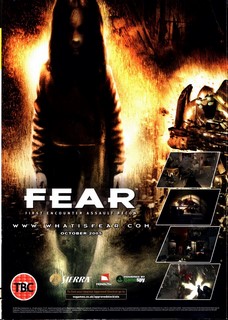
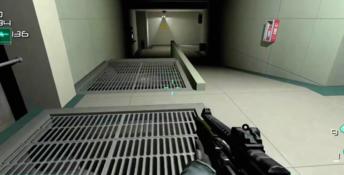







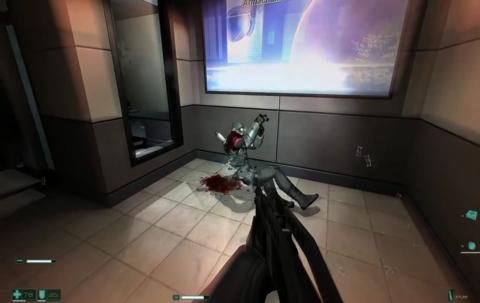























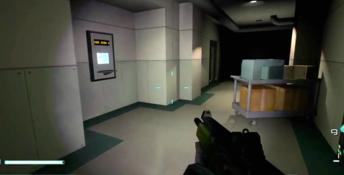


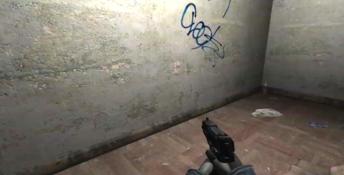














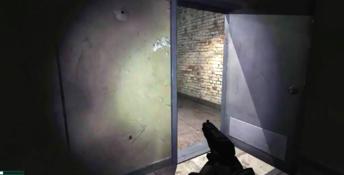

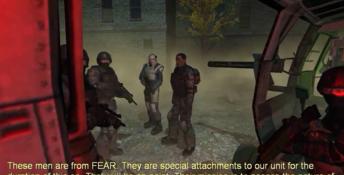


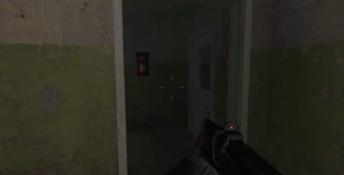













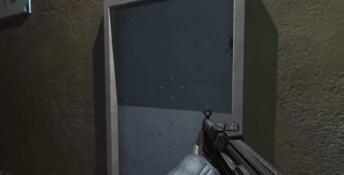






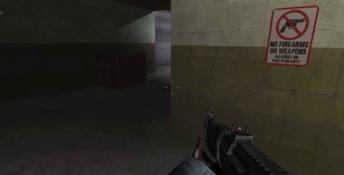

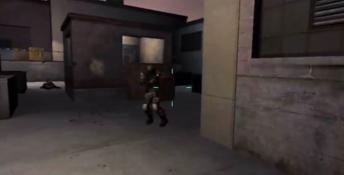
















 Home Sweet Home
Home Sweet Home
 Little Nightmares
Little Nightmares
 FATAL FRAME / PROJECT ZERO: Maiden of Black Water
FATAL FRAME / PROJECT ZERO: Maiden of Black Water
 Happy Game
Happy Game
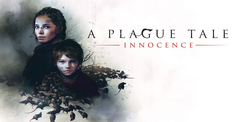 A Plague Tale: Innocence
A Plague Tale: Innocence
 Doki Doki Literature Club
Doki Doki Literature Club
 Slendytubbies 3
Slendytubbies 3
 Hello Neighbor
Hello Neighbor
 Omori
Omori
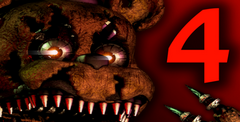 Five Nights at Freddy's 4
Five Nights at Freddy's 4
 Slendytubbies 2
Slendytubbies 2
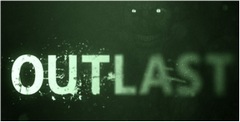 Outlast
Outlast
 Duck Season
Duck Season
 CASE: Animatronics
CASE: Animatronics
 F.E.A.R. 3
F.E.A.R. 3
 F.E.A.R. 2: Project Origin
F.E.A.R. 2: Project Origin
 Dreamkiller
Dreamkiller Flock!
Flock!
 Lucius
Lucius
 Alone In The Dark
Alone In The Dark
 Earth Defense Force: World Brothers
Earth Defense Force: World Brothers
 Dead by Daylight: Resident Evil Chapter
Dead by Daylight: Resident Evil Chapter
 Orcs Must Die 3
Orcs Must Die 3
 Intravenous
Intravenous